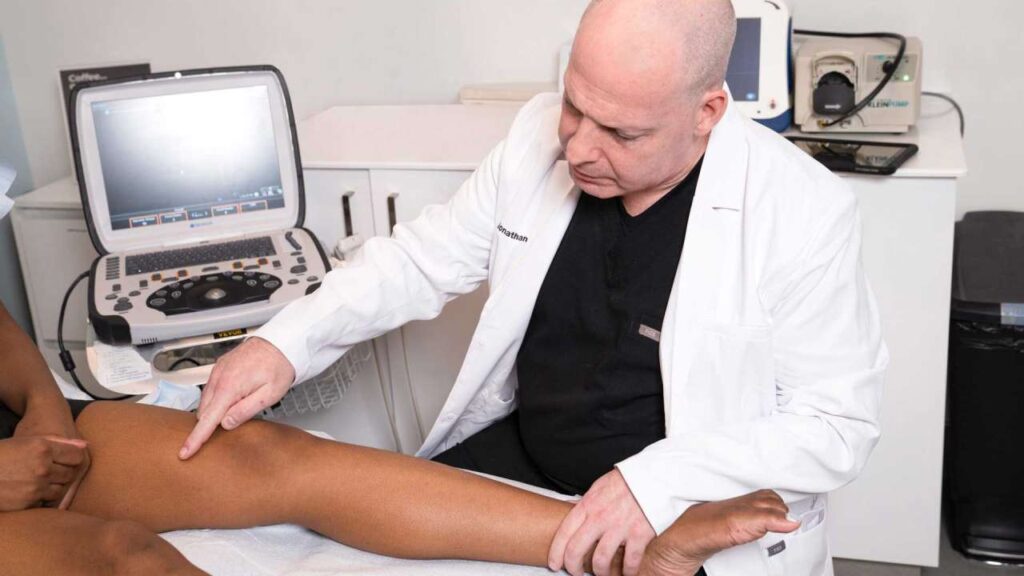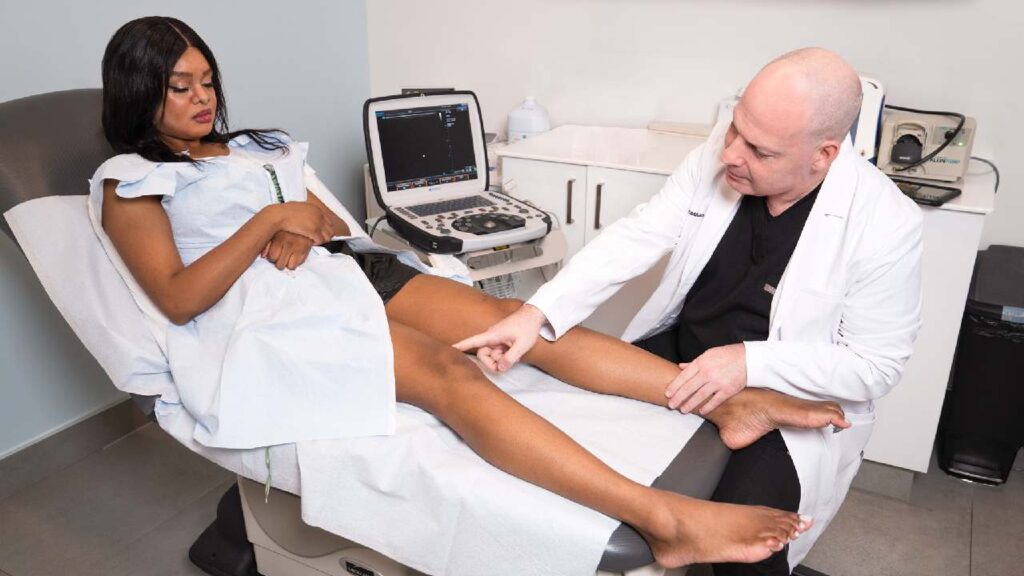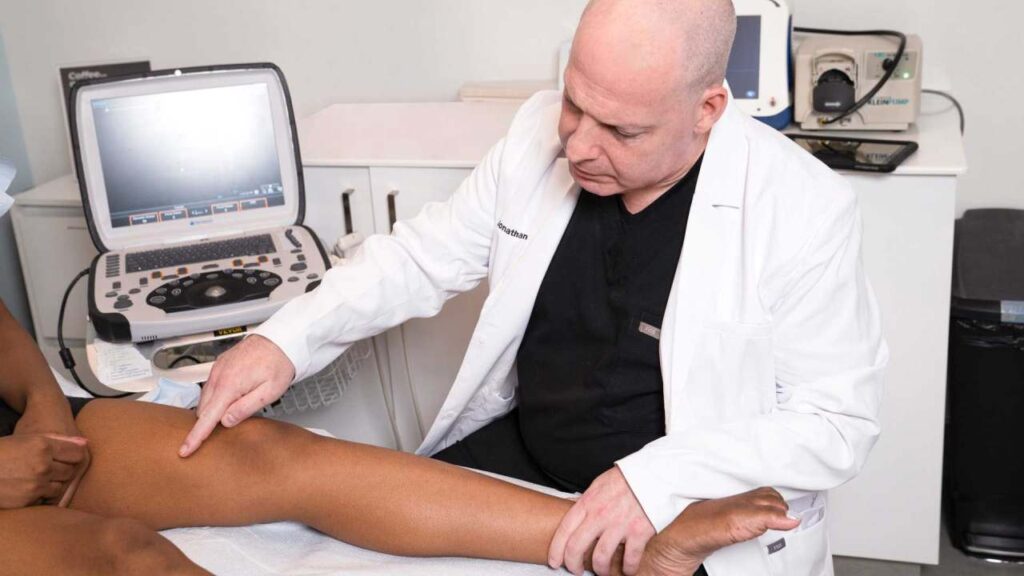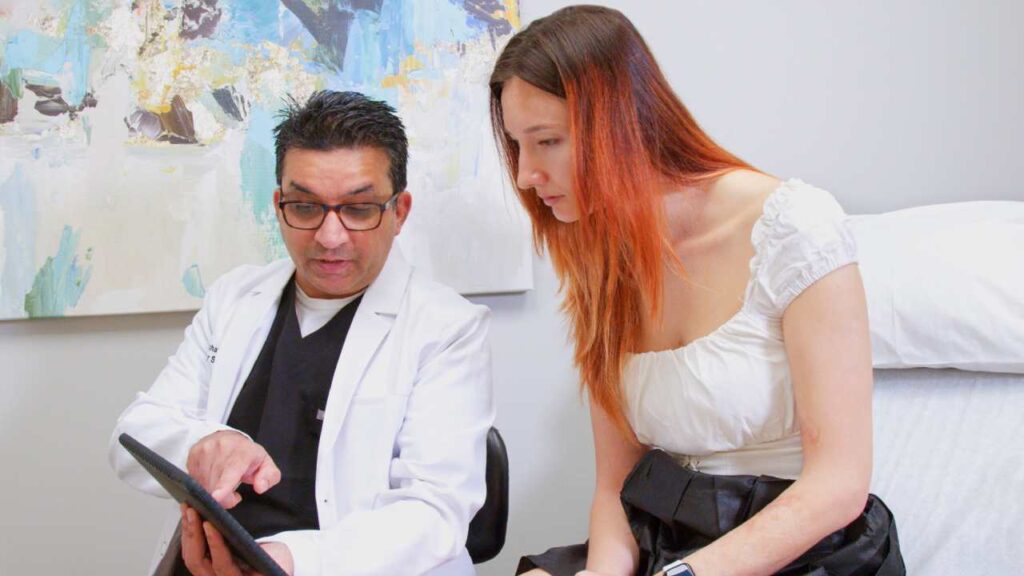If you’re dealing with spider veins, it’s time to make an appointment with a reputable varicose vein specialist. You can expect the highest standard of care from vein doctors at Vein Treatment Center New York. Click HERE to book an appointment at our excellent vein center, or keep reading to learn more about spider veins and how you can seek treatment for them.
Veins throughout the body have one-way valves that guarantee blood flows to the heart but does not return to the limbs. Leg veins must work extra hard to return blood to the heart since they are fighting gravity. When the valves in the veins of the legs get damaged, gravity takes over and blood flows backwards to pool in veins near the feet.
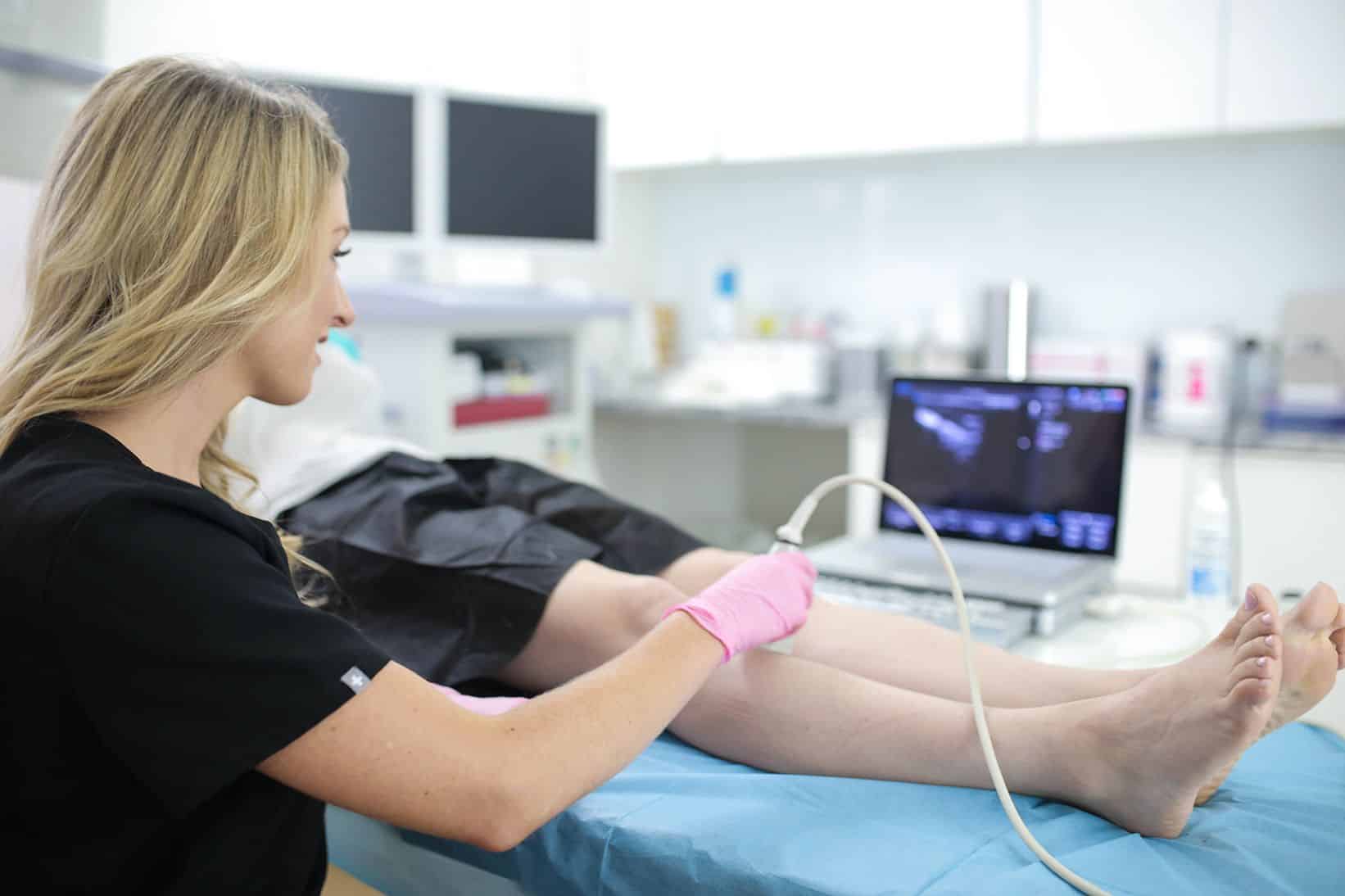
When this occurs in a single vein, it is referred to as venous reflux; however, when this occurs in several veins, it is referred to as venous insufficiency, since the venous system is no longer able to adequately return blood to the heart.
The pressure in the vein rises with time as a result of fluid buildup, resulting in bulging veins. These bulging veins are classified as spider veins or varicose veins based on their size, appearance, location, and amount of irritation.
1. Appearance
Poor cosmesis, or the unpleasant look of spider veins on the legs, frequently makes individuals feel self-conscious, so it is vital to recognize them and get vein treatment at a vein clinic before they worsen. Spider veins are thin, measuring less than a millimeter in diameter. They resemble spider webs in red, blue, or purple and can be found in bunches on the legs or face. Varicose veins, on the other hand, are thicker and look like a knotted rope.
Spider and varicose veins may be extremely painful and inconvenient, especially when they begin to spread out and grow in size and quantity. Even if the veins do not appear to be a source of concern, you may still feel symptoms as a result of underlying venous insufficiency.
2. Bleeding
Spider veins are frequently accompanied with bulging varicose veins. Even the slightest touch, bump, or scrape can result in excessive bleeding since the skin above them is stretched extremely thin. If these veins begin to bleed, lie down and elevate your legs above your heart, exerting pressure to ensure blood flows away from your legs and back to your heart.
If the bleeding does not stop within 1-2 minutes, go to an emergency room. Once the bleeding has stopped, make an appointment with a vein doctor at a vein treatment clinic as soon as possible.
3. Skin Conditions
Some of the most prevalent skin problems caused by varicose veins include eczema, lipodermatosclerosis, and leg ulcers.
- Eczema (stasis dermatitis): The fragile skin around injured veins becomes red and scaly as a result of inflammation
- Lipodermatosclerosis: Subcutaneous tissue beneath the skin scars up due to a vein injury and a lack of blood supply in the area
- Ulcers: When blood collects in the lower extremities, it puts pressure on the vein walls, causing skin breakage. These are open wounds that do not heal adequately due to a lack of blood circulation to the region.
Although treatment for spider veins used to be exclusively through surgical procedures, medical innovation has brought us to a time in which we can treat varicose veins and spider veins through minimally-invasive treatment options such as VenaSeal or Radiofrequency Ablation. These are low-risk, take less than an hour to perform, and have no recovery time after leaving the vein center.
After an initial treatment of the saphenous veins, which are the veins at the root of all other veins in the lower extremities, and other damaged veins contributing to vein disease, the next step is to improve the surface-level appearance of the spider veins. The vein doctor will use sclerotherapy, a non-surgical minimally-invasive treatment that uses tiny needles to inject medicine that improves the appearance of spider veins in just one month.
Just like the other treatments, the whole procedure takes less than 30 minutes and causes little to no discomfort. You can return home or to work after your appointment at a vein treatment clinic because there is no anesthesia or recovery time involved.
For a personalized treatment plan for your spider veins, look no further than the Vein Treatment Clinic location in New York City is conveniently located in the heart of New York in Midtown, near notable landmarks such as the Chrysler Building. Check out the Vein Treatment Clinic location in New York City for vein treatment today!
